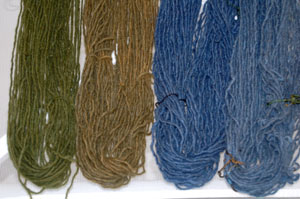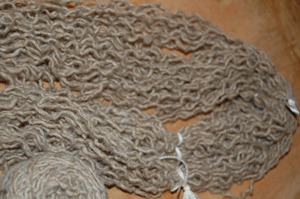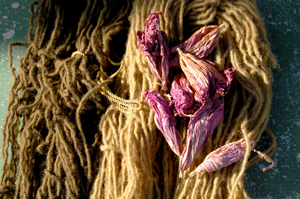I don’t know how official this is but most people I know consider “Labor Day” – which in the US falls on the first monday of September – as the end of summer. I ended my summer with a Woad vat. The wool is my SCHG challenge recycling/upcycling project.

Starting from the left: Woad overdye Hibiscus (yellow); Woad overdye onion peel (orange-yellow); Woad multi-dipped; Woad one dip.

I had hoped to grow my own Woad but as it turned out I was growing Weld. (Oh don’t ask, so much for my plant identification skills…)

This Woad was purchased in powder from from Woad Inc in the UK. The All About Woad site has really excellent directions and also sells Woad dye and kits.
Besides the dye plants (my project) there is the family vegetable garden. Most years we get a supply of dried tomatoes and soup beans. This year we tried growing corn. Besides what was eaten fresh and given away we have dried corn (soup, cornbread, etc.).



[dried -> ground -> corn bread]
And the first boll on my cotton shrub just started opening.

Eat corn bread, contemplate the Woad vat, not a bad ending for the summer.
Powered by ScribeFire.


